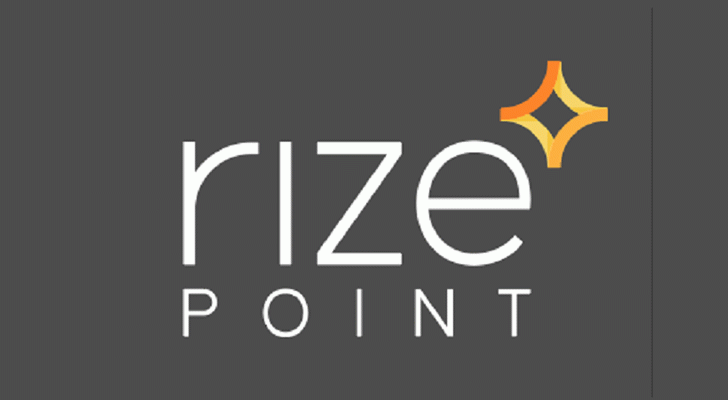by Kari Hensien, President of RizePoint
COVID-19 has changed the way we all do business, making many within the food and beverage industries step back and reassess their quality and safety systems. As the pandemic continues, you may feel overwhelmed by worry: How will my business survive? How can I manage increased risk around this highly contagious virus? How can I implement stringent new health and safety protocols and ensure compliance?
Elevating your food safety culture is one of the most important things you can do during the ongoing pandemic. And embracing the newest, most innovative tech tools is integral to these efforts.
Time for Technology
A huge challenge in overhauling food safety cultures is the entrenched belief that “the way we’ve always run things still works.” But, in many instances, this belief blocks the investment in new digital tools that elevate the visibility and insights necessary to reduce risk in a continually changing market and world.
Technology helps ensure that your business becomes safer and stronger at a time that everyone is worried about health and safety more than ever before. Increasing evidence shows that digital tools create an even safer, more accurate, and efficient quality management systems and food safety protocols.
There are flaws with food safety systems that rely on paper and spreadsheets. For instance, it’s nearly impossible – and certainly laborious and time consuming – to integrate and analyze critical data using paper records. Manual systems simply don’t give the broad, holistic views that digital solutions can provide almost instantaneously. Additionally, when an event occurs, it can be challenging to locate specific paper records from file cabinets, cardboard boxes, or stacks of paperwork on somebody’s desk.
What’s the solution? Tech tools can boost food safety initiatives, protocols, and food safety culture. Embracing and adopting technologies can help you, and employees at every level, be more accurate, proactive, and safe.
6 Benefits of Turning to Software to Manage the Challenges of 2020
The world we now live in has presented new challenges. But, in some ways, it has sped-up changes that we already knew were coming. A good example is the release of the FDA’s New Era blueprint that plans for – and encourages – the adoption of more technology to manage food safety. Following are six major benefits of doing so:
- More data-driven decisions. Paper records make it impossible to collect, integrate, and analyze data critical to food safety efforts. Manual safety checks are often done haphazardly – if they’re even done at all. Supervisors have no way of knowing whether employees skipped a paper safety inspection – boosting the possibility for increased COVID-19 risks, or other safety issue (e.g., security breach, recall or foodborne illness outbreak).
But what if companies held their employees more accountable? What if they required digital audits with “proof” that safety checks were completed correctly? What if they utilized mobile apps that were easy to use on employees’ smartphones? And what if food businesses collected, integrated, and analyzed safety data on a regular basis? Then, they could make smarter decisions based on this information. For instance, they could spot – and solve – potential problems before they become liabilities – essential at any time, but even more so during a global health pandemic.
- No more binders, loose papers, and complex spreadsheet management. A huge problem with paper records (including QA audits) is that they can be forged. If employees skip or falsify safety inspections, it poses a real threat to food safety. In these cases, managers erroneously believe that safety checks, cleaning/sanitation tasks, and other key items have been completed correctly – when they often haven’t been done at all.
In today’s high-tech world, it’s shocking that so many food businesses still use antiquated paper systems to manage food safety standards, including inspections, audits and training. Transitioning to tech tools boosts safety significantly. Food business owners may resist technology, believing (erroneously) that shifting to digital tools will be overwhelming, expensive, complicated, and/or intimidating. The reverse is actually true. Current tech solutions are affordable, attainable, and easy to use.
- A move to a reward-based — not punitive — food safety culture. Prioritizing your commitment to a food safety culture will protect your brand and manage risk. Demonstrate your commitment to proper COVID-19 protocols, such as employees wearing personal protective equipment (PPE), social distancing guidelines in place, and elevated cleaning protocols. Company leaders should emphasize that food safety is a non-negotiable priority and demonstrate that it’s engrained in their company culture. Leaders that prioritize food safety, demonstrate its importance, and explain the reasoning behind the protocols will maximize compliance and have better outcomes.
- Better continuous quality through increased self-assessments. Since travel and interpersonal interactions have been derailed by COVID-19, it’s been challenging to obtain third-party audits since the pandemic began. Therefore, companies should implement frequent self-assessments for more robust visibility across the enterprise. Digital tools, including mobile apps, make it simple for companies to self-audit, gather insights, collect, and analyze data, determine compliance, and implement corrective actions, as needed. Additionally, digital tools boost visibility by location, providing continuous quality and significantly increasing safety and compliance.
- An easier way to manage, track, and recall more data. To manage the influx of data from more self-assessments, invest in software solutions. This is essential as food businesses implement increased regulations around the COVID-19 outbreak. Using the data correctly can help companies focus on high-risk locations, allowing them to take immediate and long-term corrective actions to address any issues. Innovative, user-friendly digital tools can easily and accurately collect and analyze data, which food service leaders can use to make informed decisions around safety, quality, and compliance.
- Better company-wide communication and alignment. Another problem with paper systems: it’s challenging to manage communications flow. Companies must be able to quickly and efficiently disseminate rapidly evolving information – such as changes to COVID-19 protocols, CDC updates, etc. – to all employees. This is especially true for businesses managing multiple locations, teams, and shifts. To ensure fast, efficient, accurate, consistent communication across all units and employees, rely on digital tools.
Adopting and utilizing technology is a critical way to manage food safety, quality, and compliance. Everyone within the food industry must take food safety seriously every day, amplifying efforts in our current climate. Therefore, food businesses should use every (digital) tool at their disposal to maximize safety and minimize risks.
As President of RizePoint, Kari Hensien is championing a new continuous quality initiative. Since travel and interpersonal interactions have been devastated by COVID-19, it’s been challenging for businesses to obtain regular third-party audits, which are integral to access and analyze key data and ensure safety compliance across the enterprise. Kari is facilitating an increased self-assessment auditing model, where businesses and their locations can use RizePoint’s digital platform themselves, resulting in more frequent audits and broader visibility during the pandemic and beyond. For more information or to discuss RizePoint’s solutions, please contact Kari at kari.hensien@rizepoint.com.








